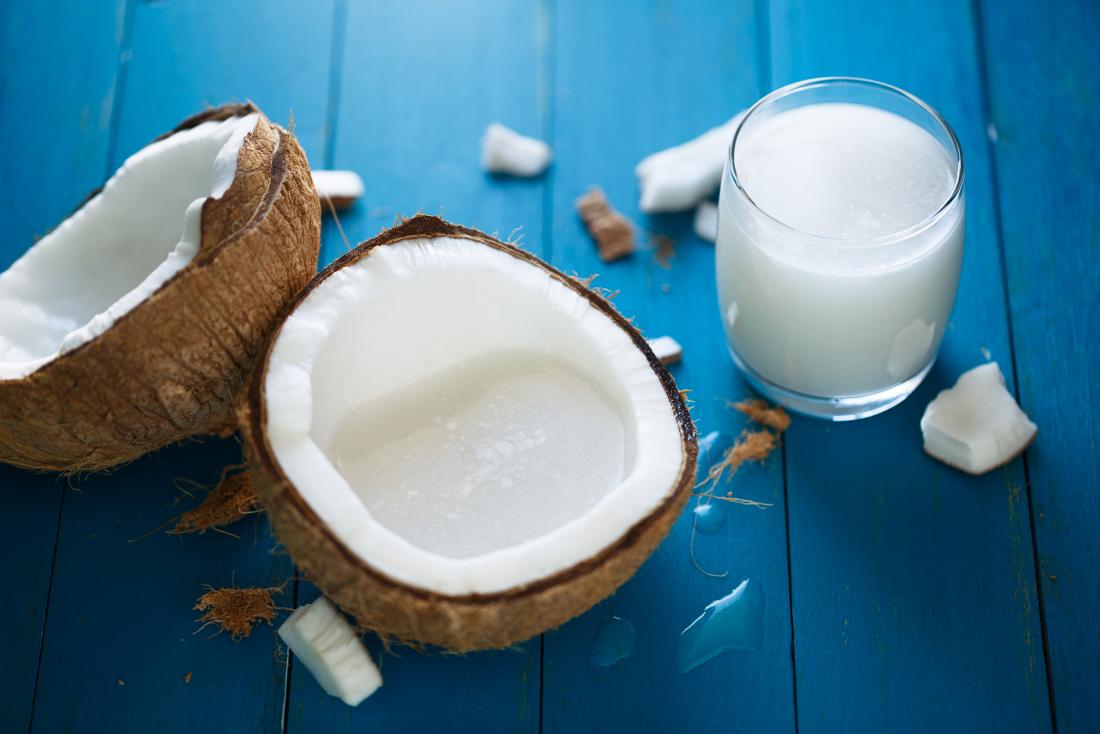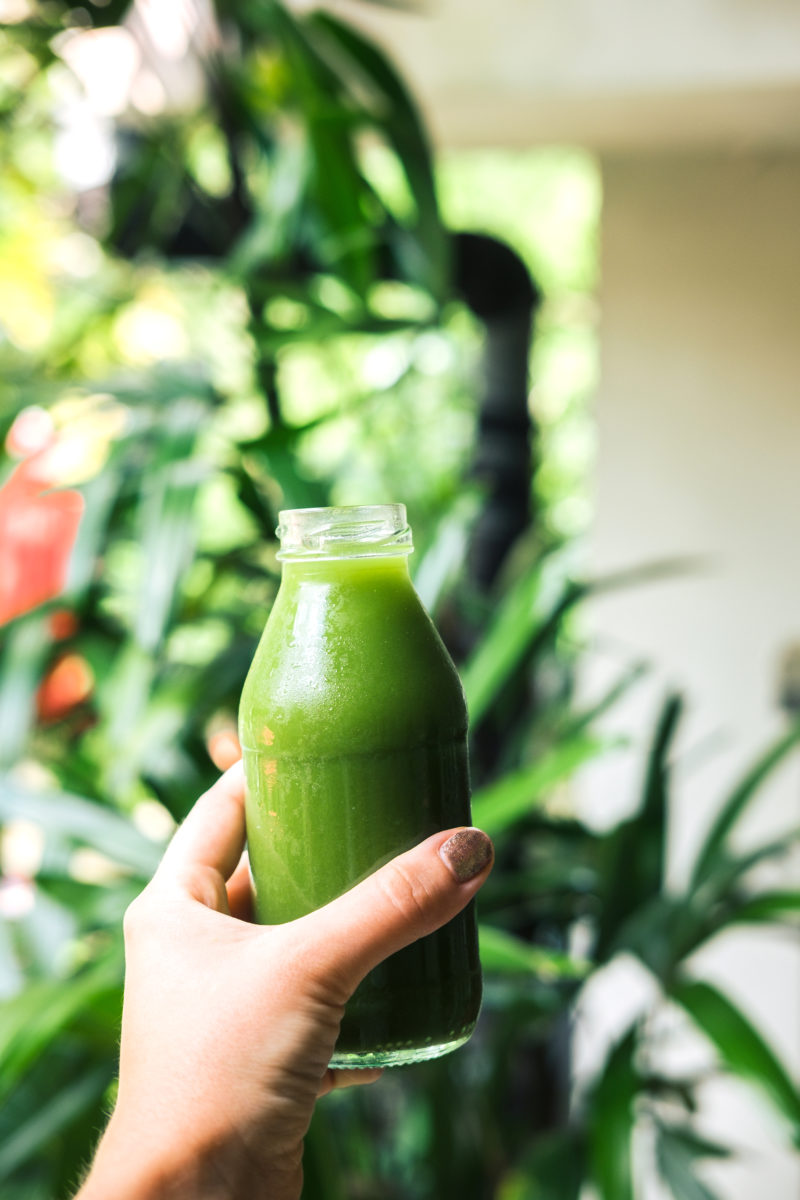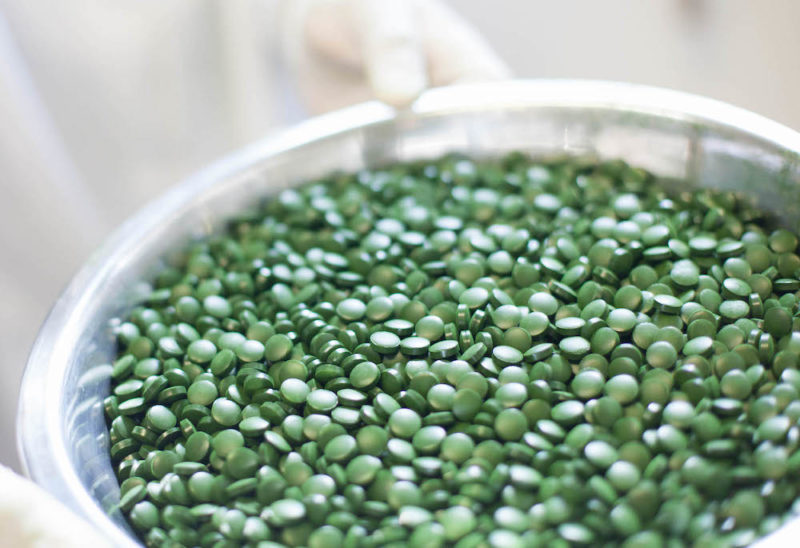Should You Ditch Sports Drinks for Coconut Water or Vitamin Water? Here’s the Science-Backed Answer
August 9, 2019Whether you’re going hard on the treadmill, waking up with a mind-numbing hangover or just quenching thirst on a hot day, sports drinks have become an American staple. Children even pack them in their school lunches. But should we be downing this drink as often as we do?
The market has expanded since the inception of these beverages in the ’90’s. Other energy-boosting alternatives (like beet juice and blends) take up just as much space in the market aisles. But today, we’re comparing three options. Between sports drinks, vitamin water and coconut water, which is the better choice?
The answer? Well, it’s important to focus on how you’re going to use them and just what ingredients go into your specific drink of choice. Let’s dive in a little deeper with a comparison.

How Do Sports Drinks Fare?
Exercise and Performance
Sports drinks weren’t always multi-purpose. They were first created in response to fatigued football players on the field. Does its purpose keep up decades later? A University of California, Berkeley report suggests that the beverage might actually be beneficial for hydration and endurance. But…there’s a catch.
The study merely suggests that they could be beneficial…if someone is working out vigorously in a session for 90 minutes or more; however, those results can’t be extended any farther than that. And it does not take into account how daily consumption would contribute to overall health.
What does this mean? Well, for the average person putting in say, 30 to 60 minutes a day, these drinks wouldn’t be doing the job. And even then, the harmful extras could do more harm than good in the long run.
So, what danger lurks in these drinks?
Drawbacks
Most sport drinks contain a bunch of additives, which makes adding these as your daily go-to’s a definite no-no. Some of these drinks may include:
- high fructose corn syrup (glucose-fructose syrup)
- sucrose syrup
- sodium citrate
- monopotassium phosphate
- food starch
- color additives (such as red 40)
Does anything already stick out to you? You might have already found at least two things you are shaking your head at. There are no super nutrients, just super dud ingredients.
First, let’s tackle the syrups. High fructose corn syrup helps sweeten and lengthen the shelf life of food and drinks. However, the syrup is associated with consequences. For example, the American Society of Nephrology suggests the syrup can contribute to higher blood pressure levels in adults, even with no history of hypertension.
And sucrose syrup? This sweetener has been tied to the promotion of obesity, type 2 diabetes, high blood pressure and artery disease. (1)
But, do the added chemicals do any benefit? Short answer, not really. In theory, adding potassium and sodium may sound like a good idea, but they don’t really add anything when drinking from sports drinks. You’re much better off just getting this from trace minerals from fruits, veggies and whole foods. (If you need help working greens, try our 4 easy steps to start eating more veggies).
Let’s not forget bout the color additives. You should stay away from those. Their sole existence is to make the drinks look more marketable, but studies have linked them to higher risks of hyperactivity in children and risk of other diseases.(2)
What About Vitamin Water?
Okay, so maybe sipping on a sports drink isn’t the best idea. Is vitamin water any better than sports drinks?
Like sports drinks, this concoction was created when plain water just didn’t do the trick. Some people thought, “what if we could add minerals and vitamins to boost rehydration?” Flash forward to now, where vitamin waters are plentiful, with diet and zero-calorie options to match.
But are they any different than sports drinks? Not really.
Exercise and Endurance
Again, adding minerals and vitamins to your drink sounds appealing. For people who avoid swallowing vitamin capsules (it can be difficult, we get it), seeking out vitamins through this route seems ideal.
With added electrolytes, certain vitamin water choices might come in handy, but only during hard, intense workouts here and there.
But what about an average user? The additives may set the drink back.
Drawbacks
In theory, vitamin waters are great: just replenish what you’re losing. Perfect, except that’s not exactly how that works.
Some of these beverages can contain excess amounts of vitamins, way more than one person would need in a day. And unless you were really pumping iron, like every second of a long workout, there is no way you would lose enough electrolytes or vitamins to even warrant the excess in each bottle.
But that’s fine, right? The more, the merrier? Actually, no. As with lots of things in life, too much of anything can be detrimental.
Plus, these drinks often fall prey to the same ingredient listings as sports drinks, including harmful syrups and sugars, and their potential damage. (3) It’s best to opt out of this choice.
So, how does coconut water compare?

Is Coconut Water Any Better Than Sports Drinks?
Is coconut water just another online health fad or does it actually have value? Until recently, coconut water was only seen as a healthy, hydration choice, especially for those that wanted a little different taste from plan water. But nowadays, it’s multi-purposeful.
So, what does coconut water have going for it?
Naturally, coconut water contains several plant nutrients:
- antioxidant properties (like those of tart cherry)
- fiber
- vitamin C (like the amla berry)
- important minerals, like electrolytes, magnesium, calcium and potassium
But can coconut water be beneficial for working out?
Coconut Water & Working Out
Part of the water’s antioxidant properties can help fight free radicals, which can be triggered during stress or injury. This can affect blood pressure, which may indirectly affect your workout. (4)
As for actual workout benefits? The research is sparse, but it’s still looking good. Because this water contains electrolytes, it can be a good source of replenishment after a good round of exercising.
One study published in the Journal of the International Society of Sport Nutrition suggests there this hydrating drink can stand up to high-electrolyte drinks in the replenishing category, with less calories and more natural nutrients. (5) Another study published in the Journal of Physiological Anthropology and Applied Human Science suggests sodium-infused coconut water and regular sport’s drinks perform on par as well. (6)
Of course, plain water can fuel average workouts too, but when it comes to intense workouts, you can opt for coconut water instead of high calories and fructose-filled options. Just be sure your coconut water uses pure and true ingredients and is free of added sugars.
Pure Planet Coconut Water
Coconut water is already great, so some superfood-help can only make it more awesome! That’s why we carefully crafted our premium coconut water blends.
- Joint Rescue: Optimized with tumeric and black pepper, this blend promotes healthy joints–for athletes and non-athlete’s alike!
- Rehydrate: Mixed with ginger, mineral salts and rooibos, this blend provides boosted hydration support, supporting electrolyte balance.
- Energy: Specially-designed with yerbe mate and rhodiola root, this blend promotes stable energy.
Stay hydrated, friends!
Cited Studies:
- Shapiro, A., Tümer, N., Gao, Y., Cheng, K. Y., & Scarpace, P. J. (2011). Prevention and reversal of diet-induced leptin resistance with a sugar-free diet despite high fat content. British Journal of Nutrition, 106(3), 390-397.
- Arnold, L. E., Lofthouse, N., & Hurt, E. (2012). Artificial food colors and attention-deficit/hyperactivity symptoms: conclusions to dye for. Neurotherapeutics, 9(3), 599-609.
- Malik, V. S., Schulze, M. B., & Hu, F. B. (2006). Intake of sugar-sweetened beverages and weight gain: a systematic review–. The American journal of clinical nutrition, 84(2), 274-288.
- Santos, J. L., Bispo, V. S., BC FILHO, A. D. R. I. A. N. O., Pinto, I. F., Dantas, L. S., Vasconcelos, D. F., … & Gomes, O. F. (2013). Evaluation of chemical constituents and antioxidant activity of coconut water (Cocus nucifera L.) and caffeic acid in cell culture. Anais da Academia Brasileira de Ciências, 85(4), 1235-1247.
- Kalman, D. S., Feldman, S., Krieger, D. R., & Bloomer, R. J. (2012). Comparison of coconut water and a carbohydrate-electrolyte sport drink on measures of hydration and physical performance in exercise-trained men. Journal of the International Society of Sports Nutrition, 9(1), 1.
- Saat, M., Singh, R., Sirisinghe, R. G., & Nawawi, M. (2002). Rehydration after exercise with fresh young coconut water, carbohydrate-electrolyte beverage and plain water. Journal of physiological anthropology and applied human science, 21(2), 93-104.
Sea algae might be something you’re willing to try, but how exactly do you do it? Tablets are easy to ingest daily, but what about powder? Some of us may not like mixing the green blends with water. But hey, that’s a good way to go.
We’ve outlined a few ways you could try nature’s multivitamin, spirulina. We also covered red marine algae. Now, we’re giving you some ideas for chlorella, a strain of algae that has fascinated nutritionists for a long time now.
Before we get to the recipes, here’s a quick run-down of the benefits of chlorella.
Benefits of Chlorella
Like other greens, this single-celled algae is nutrient-dense, making it a good way to supplement. We’ve covered these benefits more in depth, but here’s the gist.
- Chlorella binds to heavy-metals, making it a helpful veggie during cleanses.
- It contains antioxidant, which can help manage healthy blood pressure, blood sugar levels and even help lower cholesterol.
- It may help boost aerobic exercises (through antioxidants and other plant nutrients).
- It could help boost your immune system, helping your body fight against infections and viruses.
Recipes
Okay, are you ready for chlorella recipes? Our mouths are watering so let’s get started.
Avocado Spread
Who doesn’t love avocado? Why not boost the nutritious green with help from another? Sea algae guac may not sound appetizing, but you’d be surprised how good it can be.
Here’s the simple instructions.
You’ll need:
- 1 Avocado
- 1 teaspoon chlorella powder (try ours)
- Spices or chili flakes (we like our guac to have a little punch)
Instructions:
All you need to do is mash the avocado and chlorella together. Mix thoroughly. Then sprinkle in your spices. Poof! You’re done. Try spreading it on bread or crackers for a light snack. You can also use it for you taco dinner night!
“Merman” Smoothie
Gwyneth Paltrow and the folks over at Goop created a Merman Smoothie that we can’t wait to try. We love ourselves a good mermaid-themed dish. It includes pumpkin seed milk, coconut meat, mint and more! Yum, right?
Add a little cacao nibs, and you’re on a smooth train to relaxation.
“Chlorella De Ville”
A Disney pun? That’s really all you needed to get us hooked. Greenblender created this recipe packed with vitamins, fiber and protein. Mixing swiss chard, kiwis and banana, this smoothie is the green dream
Green Cream
Looking for a tasty yet nutritious topper for your breakfast AND dinner bowls? My New Roots has you covered. Using maple syrup and tahini, this recipe transforms chlorella into a multi-functional cream that you’ll want to drench over everything.
Cacao Balls
Vegan cacao balls are a main-stay for plant-based eaters. You can never really go wrong with chocolate, right? Using almonds, cashews, dates and more, Better Nutrition walks you through instructions in creating decadent treats.
Coconut + Chlorella Water
This recipe is simple yet effective. Instead of using plain water to mix chorella with, use coconut water. It helps boost hydration and could be the perfect pick-me-up after a good workout. Plus, you can use ours, which has ginger infusions and more for extra taste.
What You’ll Need:
- Coconut water or Pure Planet Coconut Water mix
- Chlorella powder
- 1 glass of water
Intructions:
- Simple mix on tbsp of each in water and stir. Viola! Enjoy.
Chocolate Peanut Butter Hangover Smoothie
Okay, no judgement, we’ve all been there. Sometimes when you’re recovering from a night of drinking, you wake up the next morning with a raging headache and new lease on life–no more drinking (at least for a short while). Why not recover with this chocolate-packed smoothie? Don’t worry, there’s chlorella in it, so you don’t have to feel bad.
In fact, some people believe the algae can help “cure” hangovers, but only if you take it before the boozy adventures begin. The results are based off a 1996 medical study in Japan though, so we’d like to see some more current research to help back that up. Either way, it can’t hurt to try.
Thank Happy Veggie Kitchen for the recipe!
For more superfoods blends, check out our website.
These statements have not been evaluated by the FDA and are not intended to diagnose, treat, cure or prevent any disease.
All aboard the sea algae hype train, because we’re tooting the horn once again. We’ve already OBSESSED over red marine algae and spirulina, but today we’re talking about another member of that family–chlorella!
Have you ever heard of it? If you’re into cleansing and nutrition, then this is the dark green powder of your dreams. Here’s why.
Benefits of Chlorella
1. It’s a detoxifying powerhouse.
This green algae can help the body cleanse. But so can every other veggie, right? So, what’s so special? Well, this single-celled algae specifically binds to heavy metals. Because of this ability, the superfood can help cleanse the body of these metals.
Studies are pretty positive, too. In fact, one study found that it may help prevent metal toxicity in key organs, like the liver and kidneys. (1)
Heavy metals can be toxic in high amounts (especially the likes of cadmium, lead and arsenic). (2) Metal poisoning can occur due to several factors:
- tainted water supply
- pesticides
- air pollution
It may not be common, but it is possible. Taking this green supplement can help boost your general detox, so it should definitely be in your cleansing protocol.
FYI: If you feel you are suffering from metal poisoning, don’t hesitate to seek medical attention.
So, what else should you know?
2. It’s a natural immune-booster.
Many fruits and vegetables can help support your immune system. Their natural antioxidants and vitamins help to strengthen the body’s ability to fight and prevent infection. Chlorella is no different.
It contains powerful antioxidants like chlorophyll, beta carotone, vitamin C and more. These properties led some researchers to explore it as an option to prevent chronic disease (3).
There are only a few human studies, but they’re promising. For example, one double-blind study found that the short-term supplementation increased the activity of specific anti-inflammatory and immune cells (4).
These antioxidants led us to our next favorite benefit.
3. Chlorella may help promote healthy blood pressure & blood sugar levels.
With a strong antioxidant profile, it’s no surprise that the algae portrayed positive results regarding lowering blood pressure. Studies are pretty positive here, too.
One double blind study found that participants taking tablets reported lower blood pressure readings when compared to a placebo (5). The researchers found that chlorella’s rich gamma-aminobutyric (GABA) acid could be beneficial in prevention of hypertension by helping to decrease blood pressure.
So, what about the supplement’s effect on blood sugar?
Research is positive as well, but we could use a bit more conclusive explorations. One Journal of Medicinal Food study found that the algae helped reduce fasting blood sugar levels (6). This could also help those with fatty liver disease. Pretty cool, right? Chlorella’s benefits are outstanding!
But, there’s one more thing you should know.
4. It’s cracked-cell form is easily digestible.
When taking chlorella supplements, it’s important to looked for “cracked cell wall” variations. Why? This form is easily digestible by the human body. The nutrients can be absorbed easier this way.
Some nutritionists and health enthusiasts believe that strains with the wall intact are useless. If the wall is intact, you may experience digestive discomfort, so we definitely advise against it.
Dr. Axe suggests this cracked wall may be what helps get what helps heavy metals and pesticides, cleansing them from the body.
So, now you know the benefit’s of consuming cholrella. But if you’re savvy to sea algae, chances are you have a question lingering in your mind.
What’s the difference between spirulina & chlorella?
Yes, spirulina, nature’s multi-vitamin is very similar to its cousin. So, what happens when you find yourself choosing between the two? You might find yourself like Tyra Banks in an end-of-episode elimination scene of American’s Next Top Model. “There are two sea algae standing in front of me…but only one gets to move on…”
Well, that choice depends on you. Here’s a few key difference to help you make the decision:
- Both algae can help cleanse the body of toxins; however, chlorella can bind to heavy metals (which spirulina cannot do).
- Spirulina can easily be found in most supplement stores, but cracked cell chlorella is harder to come by. (..Unless you’re shopping with us, because we have both!)
- Spirulina is a blue-green algae, while chlorella is just green. (This probably doesn’t matter too much).
Pure and True Since ’92
With any sort of dietary supplement, it’s important to buy from safe and sound business practices. We follow strict guidelines and ensure our products are top-shelf. Check out PurePlanet.com for our selection.
4 Green Smoothie Recipes That Actually Taste Good: Matcha, Chocolate + More
March 22, 2019We all know eating veggies promotes good health benefits, but we also know how hard it can be get your daily servings. Maybe you don’t have time to do all the prep work that it takes to eat raw, organic greens every day (let’s be real, who does!?). Or, perhaps you just don’t like the taste of it.
Well, we’re happy if you fall into either on of those camps, because that’s why we’re here. Not only do powdered green blends offer a longer shelf-life, but they are easy to spruce up the flavor for your taste buds.
We know it might be hard to believe so, we took our Best of Greens, with loads of veggies from the garden and sea, like chlorella and kale, and slipped it into a few tasty recipes. We added a few of our superfood products and a bunch of other tasty foods to fulfill even the pickiest of palettes.
Whether you’re a total veg-head or not, these four green smoothie recipes are sure to please.
Okay, full steam ahead!
Avocado, Spirulina, Matcha, Oh my!
Have a hankering for multiple trending plants? Why not try them all at once? This smoothie packs a healthy punch in the best way possible. Soak in the potassium and vitamins, and enjoy the protein and antioxidants from avocado, spirulina, matcha and more.
A FoodCentric Life really hit it out of the park with this recipe. We think our spirulina mix would go perfectly with the vanilla-accented smoothie. If you’re feeling super zesty, mix in our Chocomint Spirulina blend.
Green Lemonade
By far one of the easiest drinks you will ever create, this hydrating beverage might become your daily go-to. Why lemon? The fruit complements veggies pretty well. That’s why our Best of Greens is available in lemon flavor. Plus, this drink is just as alkalizing as it is refreshing.
Ingredients:
- 1 tsp Best of Greens (original flavor)
- Around 8 oz. water (to taste)
- 1/4 cup lemon juice (about 2 lemons)
- Maple, honey or agave syrup (to taste)
- Mint leaves (optional)
*You may also substitute the above for simply Best of Greens (any flavor) and fresh, home-made lemonade. We suggest keeping it organic.
Directions:
Stir ingredients and serve with ice. You can also blend until smooth.
Chocolate, Peanut Butter Smoothie
Sounds great, right? But you’re thinking…where’s the veggies? Well, the dedicated mommy over at Gimme Some Oven perfected a smoothie so tasty that you’ll forget vegetables were ever in it. (Yes, we promise they’re one of the main ingredients). This is a top favorite among all green smoothie recipes.
Pure Planet Substitutions
Got our goods in your pantry? You’re good to go. Here’s what we would sub in from this recipe:
- 1-2 tsp Best of Greens (unflavored) instead of spinach
- 2-3 tbsp Rice Bran Solubles instead of peanut butter (read more about this product here)
- 1-2 tsp Choco-Mint Spirulina instead of mint leaves and spinach
Berry Good Smoothie
Okay, don’t roll your eyes at us. This smoothie happens to actually be berry good for your health and taste buds. Minimalist Baker incorporates bananas, frozen berries, flax seed (great fiber source), greens and more.
Pure Planet Substitutions
Here’s what we’d be sub in, using our products:
- 1-2 tsp Best of Greens tsps instead of spinach (of course)
- 1 tbsp Rice Bran Solubles instead of peanut butter
- 1.5 tsp Organic Amla Plus instead of frozen berries*
*Whaat? You’ve never heard of the amla berry? Also known as the Indian gooseberry, this fruit packs more vitamin C than a class of orange juice and better absorption when compared to synthetic vitamins.
Keep in Touch
Let us know how your recipes go by tagging us on Instagram.
Stock up on pure + premium blends on PurePlanet.com






